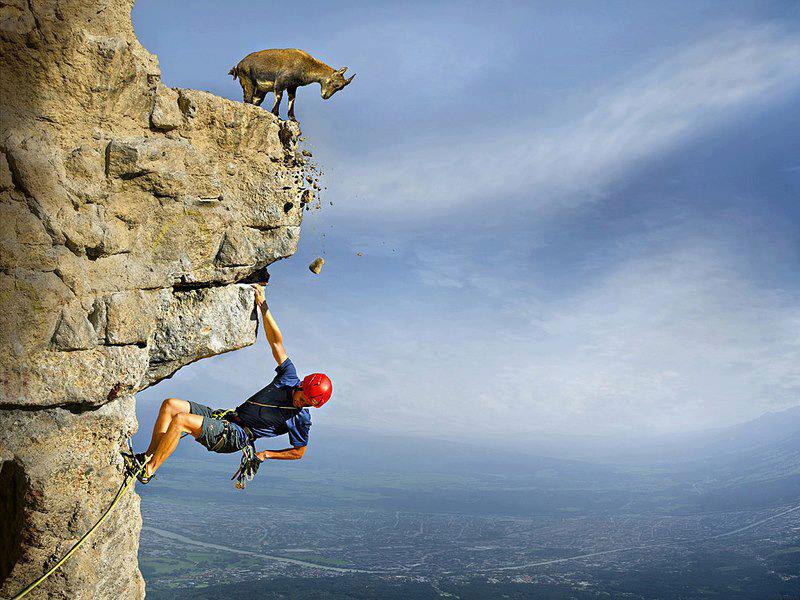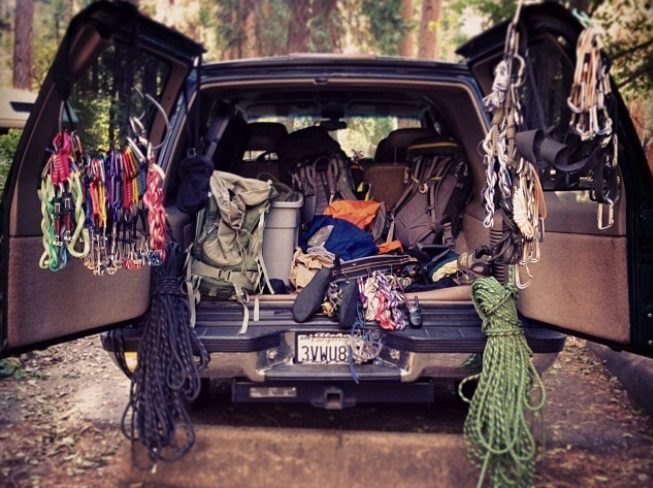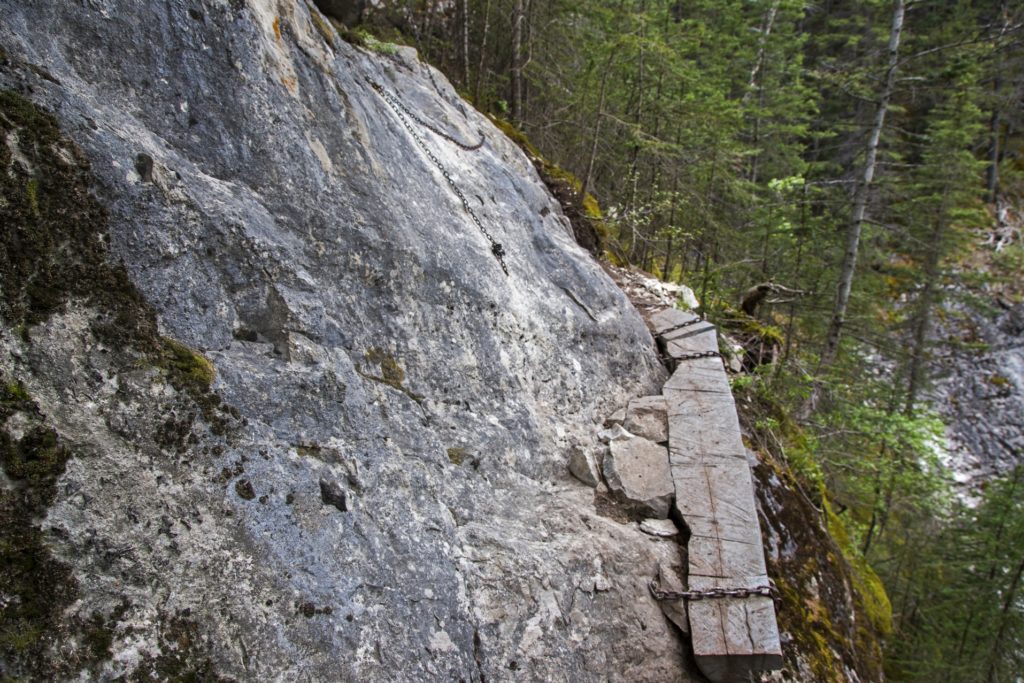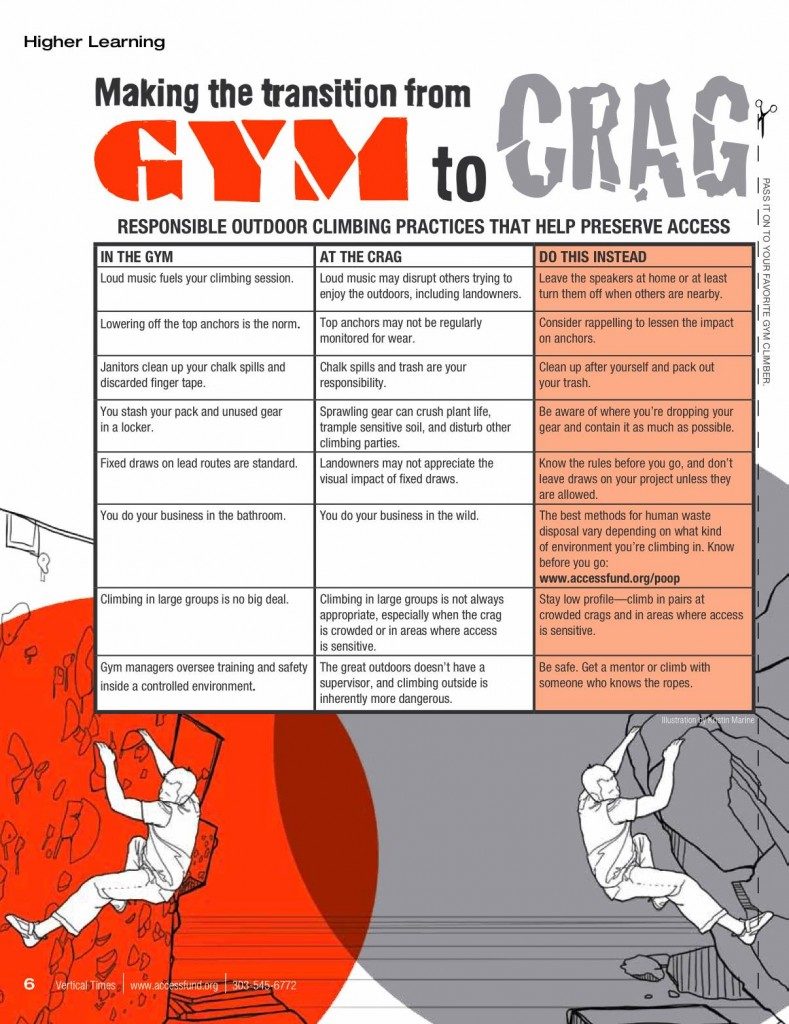20 Differences Between Indoor and Outdoor Climbing
From shouting to fixed gear, here are some of the biggest differences between the rock and the plastic

Rock climbing outdoors for your first time can be intimidating and dangerous. Chances are high that you’ve tried indoor climbing, maybe once or maybe three times a week all winter.
No matter how many times you’ve climbed indoors, just know that your first time outdoors will present a number of challenges you didn’t expect. In most climbing gyms, the bolts are spaced close together, the routes are marked with colourful holds, the anchors are easy to clip and there are belay devices connected to top ropes.
While there are many factors to take into consideration, the following list of things to keep in mind should help you get started.
Helmets
Indoors: You don’t have to wear a helmet climbing indoors, yet.
Outdoors: On your first day climbing outside, wear a helmet. Never take it off. Wear it every time you rope up. Don’t leave home without it. Helmets are your friends and they’re cool.

Landings
Indoors: Climbing gyms have foam mats and flat floors. The landings are soft because a climbing gym owner can’t have you breaking bones on their property.
Outdoors: Earth is rocky, it’s very hard and it hurts to land on. Bouldering landings are almost never flat and require skill to protect. Lead climbs can have trees or big boulders in the fall-lines.
Weather
Indoors: Nice lighting, air conditioning and heat-controlled rooms create comfortable places to climb.
Outdoors: You could get rain, snow or extreme heat. The sun might move off or onto the crag. Wind creates a wild sense of exposure.
Skin
Indoors: You’ll build a few calluses climbing on soft plastic. If you’re not careful maybe you’ll get a flapper.
Outdoors: Rock can tear your skin to pieces. Different rock can do different things to your skin. Be prepared to ease onto real stone to learn the subtleties of it.
Gear
Indoors: You have your urban pack with a water bottle, harness and gyms shoes. Few things will change throughout its use.
Outdoors: Depending on what you’re climbing and where, what you need will change. Hopefully your first time outdoors is with an experienced climber. Get them to tell you what you need. Just know that it pays off carrying more than you think you’ll need for your first time out.

Noise
Indoors: Gyms play loud music that forces people to speak loudly. You have to yell to your climber or belayer over other climbers’ voices. Climbers scream and curse when they fall.
Outdoors: Talk softly. There’s no need to yell or curse. Access can be jeapordized by climbers screaming at crags or playing music. Keep the music off or in your headphones.
Group Size
Indoors: Large groups can go to the climbing gym for social events or to “crag” with each other. It’s easy to switch out or hangdog while others wait.
Outdoors: Large groups can put stress on areas with limited lead routes. If a group of five has one lead climber, they often set up a toprope to let everyone run laps. This can put a lot of pressure on the climbs, especially “easier” graded routes. Go outdoors with one partner or in a small group.
Approaches
Indoors: Park your car or lock your bike up and walk inside.
Outdoors: Find the parking lot, find the trail head, don’t overdress, don’t under dress, watch for bears, watch for ticks, don’t get a sun burn, mosquito season? don’t get lost and find the crag. Now try to locate the route your looking for.

Your Partner
Indoors: As long as you both passed the belay test, then in theory you can partner with anyone at the gym.
Outdoors: You have to climb with an experienced outdoor climber your first time. They’ll know things that you never considered like where to stand to belay, how to make an anchor and how to read a rock climb (remember there are no coloured holds). Find a mentor who can show you the way.
Belaying
Indoors: You stand in the red square and do your proper belay technique as part-time gym employees watch your every move.
Outdoors: No one is watching or telling you where to stand. If you stand too far from the base and your climber falls, you’re both in trouble. If you stand too close and they fall you’re both in trouble. Don’t be distracted by a pretty bird or other climbers. Don’t text or pet your dog. Look up, communicate and don’t blow it!
The Crag
Indoors: Gyms are like cool indoor crags, some even let dogs roam around.
Outdoors: You want to keep in mind the direction the crag faces, how many bolted routes there are, how popular it is and how friendly it is for a first-time outdoor climber. Keep your dog on a leash and clean up its poop.
The Grades
Indoors: “Hey, I climbed a 5.11a, I’m a 5.11a climber.”
Outdoors: “Hey, I fell on a 5.8, I thought I was a 5.11a climber!” Just because you’re an indoor “sender” doesn’t mean squat outdoors. Start on an easy grade and work your way up. Repeat one grade until you have it dialed.

The Falling
Indoors: A controlled environment with big whippers being prohibited. Boulder problems are protected with comfy pads.
Outdoors: There are so many things that can go wrong falling lead climbing outdoors: you cold swing sideways into a wall, you could flip upside down, you could hit a ledge. Even toproping falls could be painful. Start small. Work your way up to bigger falls. Baby whips are safer whips than monster whips. And if you’re bouldering, start with flat landings, pads and a good spotter.
Cleanliness
Indoors: Staff vacuums up after you spill your chalk, they pick up your coffee cups and put your left-behinds into a lost and found.
Outdoors: Be a good steward of the climbing area. Love it like it’s your own, care for it like your access depends on it. Pack it in, pack it out! Don’t leave butts on the ground, don’t leave trash (not even fruit peels), and pick up litter that you find.
Your Impact
Indoors: Artificial walls can be replaced. Pads can be bought and swapped out. Plastic holds come from a factory. If you damage them, which you shouldn’t, they can be renewed.
Outdoors: Ancient and accessible rock is a finite resource. It’s delicate and has rare flora and fauna living below, on and above it. Tread lightly.

Parking
Indoors: Parking spots are provided.
Outdoors: Don’t park on private property, on the road or too close to the road. Almost every climbing area has designated parking, do your research and find out where you should leave your car. More than one climber has gotten their car towed for ridiculous parking.
#VanLife
Indoors: Unless you’re super hardcore you’re not going to be sleeping in your van outside of the gym. But if you do, we salute you.
Outdoors: It’s not 1975 and local authorities and by-law are onto you. Be careful where you park and don’t spend nights in climber’s parking lots. Smoke Bluffs, Skaha and Lion’s Head parking areas come to mind. Go find some remote road or camping spot to #VanLife it up in.
Chalk Marks
Indoors: No one seems to mind if you chalk doodle indoors, at least not much yet.
Outdoors: Don’t draw on the rock, ever. If you do tick holds, tick them lightly and brush your tick marks off later. Don’t spoil the climb for others.
Fixed Gear
Indoors: Not much of a big deal here.
Outdoors: Don’t ever take fixed gear, ever, ever, ever! Last year there were a number of ropes and quickdraws stolen at crags across Canada and the States. If it’s not yours, don’t take it.
Booty
Indoors: You wouldn’t take things that don’t belong to you. That would be stealing.
Outdoors: A long time ago, climbers would find gear on climbs and keep it. It’s called booty. But with social media connecting everyone, it seems only polite to try to find the owner. Ask locals online, join the local climbing group. They might say to keep it or they might buy you some beer for the efforts.



